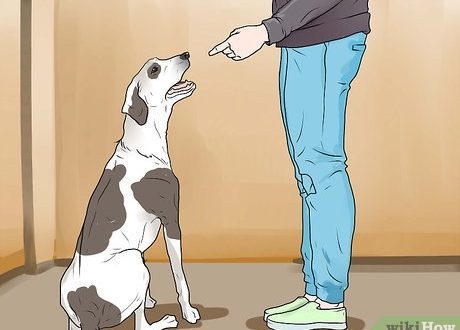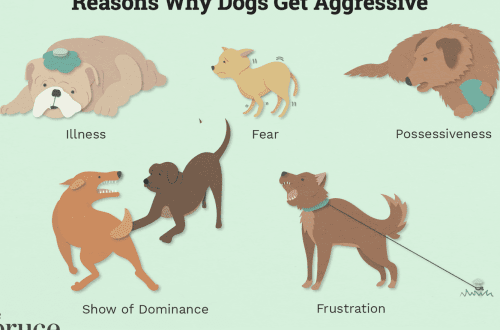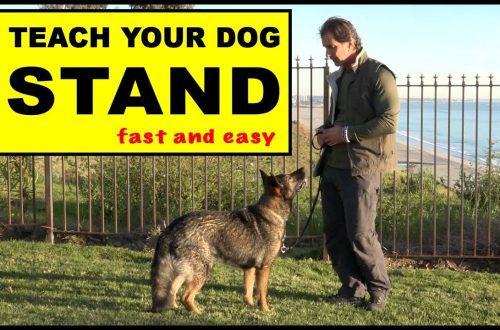
How to wean a dog to pull on a leash?
However, in reality, it is we who train dogs to pull the leash and we do it unconsciously, but with great success. So, almost a third of dog owners complain that dogs pull them.
Reasons for this behavior
While the puppy is small, his attempts to pull along do not interfere with the owner’s life. Where can such a baby move an adult! Therefore, we do not pay attention to the fact that the puppy pulls the leash, thereby allowing him to do so. We often go where it takes us. And since this happens every day for 5-6 months, the puppy at this time forms a specific way of walking: on the street you have to pull the leash behind you. So this manner of walking is fixed. As a result, it becomes normal for the puppy to feel the pressure of the collar on the neck. And it really is. Some owners, for example, complain that the dog only pulls on a leash, and once the leash is unfastened, the pet immediately calms down and walks calmly next to it.
We notice that dogs pull us when they grow up and become strong. And at this age, to teach them not to pull means to retrain, and retraining, as well as re-educating, is always more difficult. So be patient and prepare for difficulties.
In addition, remember that dogs have a need for physical activity, and failure to satisfy this need can even lead to the death of the animal. Don’t forget that dogs are descended from wolves, animals that hunt by paddock. They hunt and chase prey for a long time before satisfying their hunger. For example, European wolves travel 35–70 kilometers per day. Therefore, when getting a dog, you should keep in mind that the pet needs to move a lot, active games and training are useful for him.
Ways to wean a dog from pulling on a leash
Starting to wean the dog from pulling on the leash, you must guarantee the pet a walk to the point of fatigue.
The most effective way to get rid of the dog’s habit of pulling on the leash (this technique will not require the owner to possess physical strength) is the method of non-alternative behavior. But he takes time.
So, you went for a walk with a dog on a leash. Naturally, she begins to pull on the leash in order to quickly get where she wants to go. As soon as the dog has pulled on the leash, that is, felt the pressure of the collar on the neck, you should stop and stand until the leash sags and the pressure of the collar on the neck is relieved. After that, you must give the command “Let’s go!” and start moving. You should only move as long as the leash remains slack. As soon as the dog begins to pull it, you should stop silently and continue moving only when the tension on the leash is weakened again. First you need to give a command to move.
Over time (how soon depends on the intelligence and learning ability of the pet) the dog will understand that at first the collar begins to put pressure on the neck, and this is followed by a stop. Then she will begin to avoid it, if she, of course, wants to get to the desired destination.
To speed up the process, instead of a regular collar, you can put on a silk rope choke collar – this will enhance the effect of a stretched leash.
An even more effective way to wean a dog from pulling on a leash (or rather, to train a dog to move on a slack leash) is the method of behavior selection using a positive sound conditioned reinforcer – a clicker. Those who are familiar with clicker training should click the clicker and feed the dog only when he walks without pulling on the leash, that is, when the collar does not press on his neck. You can focus not on the tension of the leash, but on the pace of movement. If the pace of the dog’s movement matches the pace of the owner, then you can reward with clicks and treats. If the dog goes faster than you, then she will not see a click like her own ears.
In order to wean the dog from pulling the leash, you can also use strict metal collars – they are plate and wire. Some dogs actually stop pulling on the leash when they are wearing a tight collar. But as soon as you change the “stricter” to a regular collar, the dog will start pulling again. And many dogs quickly get used to the pain caused by a strict collar and continue to pull as before.
There is also a muzzle-like device called a halter. If you put it on a dog, it will quickly stop rushing forward. But then the pet will have to walk in a halter throughout his dog’s life.
There are also methods that involve unpleasant or painful effects on the dog, but they should only be used with the participation of a dog training instructor.





